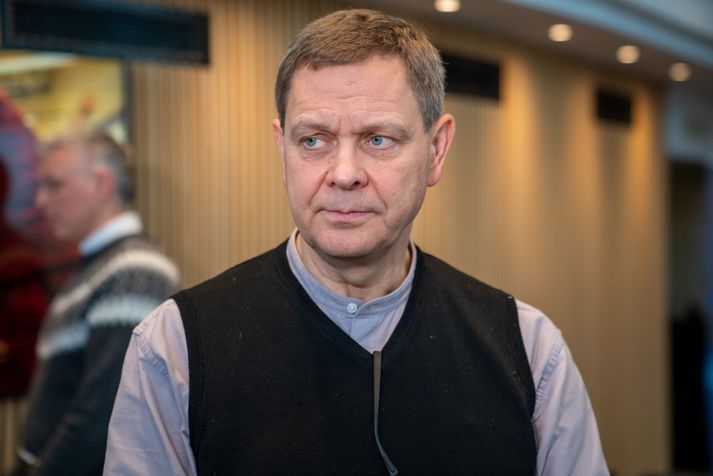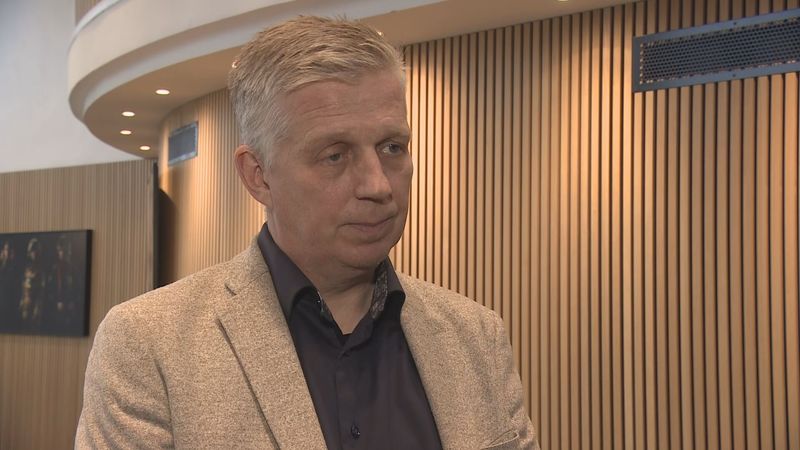- Thread starter
- #101
Volcanophiles are every bit as enthusiastic as weather fans -- here is how this man in London follows Iceland's volcanic events at home:
Follow along with the video below to see how to install our site as a web app on your home screen.
Note: This feature may not be available in some browsers.
Around midnight today, an earthquake began near Sýlingarfell and activity temporarily increased for over an hour. About 170 earthquakes were recorded in the area, and most of them were small earthquakes, but one earthquake measured 3.0 in magnitude. The seismic activity was greatest at a depth of about 3 – 5 km.
From the deformation data from GPS monitors and satellites, it can be seen that expansion continues at Svartsengi and deformation is still measured close to the magma tunnel. However, no changes were detected in the GPS measurements in connection with the earthquake last night. Both seismic and deformation data indicate that magma inflow continues both beneath Svartsengi and in the center of the magma tunnel. The tremors tonight could be an indication of increased pressure in the corridor.
In light of this and the interpretation of the latest data, an eruption over the magma tunnel is still considered likely while the inflow of magma continues. The greatest risk of magma outbreak remains in the area between Hagafell and Sýlingarfell. The risk assessment map issued by the Norwegian Meteorological Agency on November 22 is still valid.

Updated December 1 at 16.45
Seismic activity continues to decrease on the Reykjanes Peninsula, and there are now much fewer and smaller earthquakes than in recent weeks. Most earthquakes are measuring below one in magnitude. The activity is greatest between Sýlingarfell and Hagafell, where the magma tunnel runs. In all likelihood, the magma that is accumulating under Svartsengi is feeding that magma passage. The deformations are still being measured at stations near the magma tunnel, but it is believed to be due to the landslide that is taking place at Svartsengi.
Despite less activity at the magma tunnel and the immediate vicinity, landris remain stable at Svartsengi.
The event that began on October 25 with intense seismic activity that peaked on the evening of November 10 when the 15 km magma tunnel formed is not over. But it can be said with some certainty that a new chapter has begun where the same sequence of events can repeat itself.
At this stage, it is difficult to say when the next magma injection will occur and whether it will occur in similar directions. The National Weather Service continues to monitor the area carefully.
Magma seems to have stopped flowing into the magma tunnel
Sunna Sæmundsdóttir writes December 4, 2023 12:18 p.m
Magnús Tumi Guðmundsson, professor of geophysics, says that the probability of an eruption has decreased.INDEX/VILHELM
Magma seems to have stopped flowing into the magma tunnel at Reykjanes. It now gathers under Svartsengi at a speed similar to the flow of the Elliða River. A professor of geophysics says that the probability of a volcanic eruption has decreased even though it cannot be written off...
-- Source (Autotranslated)
All down to two hours notice on the surface
Víðir Reynisson, Chief Inspector of Civil Defense, says this new risk assessment does not change much in the larger context.
"The activity in the magma tunnel has stopped for now. It also tells us that there is still magma flow under Svartsengi as it was before the November 10 scenario. The risk assessment also says that such a scenario can happen at very short notice. The National Weather Service has said that the warning time after a magma flow starts and before something happens on the surface could be as little as two hours."

Civil defense and evacuation alert levels are and will remain in effect. The situation in Grindavík is under constant review, but it is not considered safe to stay in the town longer than is currently allowed.
"But we are constantly trying to reassess this because we know that Grindvíking want to get home. We know that people at least want to be able to choose whether they can stay at home or somewhere else."
No chance of getting home before Christmas
Now there has been some demand to spend Christmas in Grindavík. Is there any chance of that?
"They're not big, see. But...
-- RUV (autotranslated)

Southland's Volcanic and Natural Hazards Group stated in a status post on Facebook today that it seemed that landris in Svartsengi "has practically stopped this week".
Horizontal movements can still be seen on several gauges, but they have also been significantly reduced...
-- Source (autotranslated)
"Of course this is civil disobedience, but if you don't get arrested, I don't think it's a big crime," says Ólafur Benedikt Arnberg Þórðarson, who runs Hotel Grindavík and the restaurant Brúna in the town, but he was threatened with arrest last night if he (did not leave)...
-- Source
In the morning news, a restaurateur in Grindavík was interviewed who said that he was not allowed to open his restaurant, but he and his wife have stayed in their home for the night. According to news agency sources, more residents have done so as well. Úlfar Lúðvíksson, police chief in Suðurnes, says one rule applies to everyone without exception. Everyone is open for presence and activities in the town from seven in the morning to nine in the evening.
"It may well be that someone has been hiding in town, but this has not been a problem so far." This case that happened yesterday, I just show full understanding. Many of the residents of Grindavík are very tired of this situation, which has been going on for a very long time. But it's not like the police, or the chief of police, gives orders to arrest people and deport them," says Úlfar.If there is a slight change from the current situation, lifting the evacuation will be considered
"The weather office will issue an updated risk assessment on Wednesday due to (seismicity) at Grindavík. If there is a slight change from the current situation, lifting the evacuation will be considered," according to Úlfars.
"If the danger assessment map doesn't change from what it looks like today, if I don't see big changes in the National Weather Service's danger assessment map, then it could very well be that the evacuation will be lifted." Then things go back to normal."
Eruption started around 22:17 on 18 Dec. north of Sundhnúk on the Sundhnúka crater series. The prelude was a powerful earthquake that started just before 21. At 23:25 there was a magnitude 4.1 earthquake just SE of Hagafell. Since 20:30, almost 500 earthquakes have been recorded at the magma corridor. See also the news: Eruption started on the Reykjanes Peninsula.
Written by geoscientist on duty 19 Dec 05:40
This article is written on 19. December 2023 at 02:35 UTC. Information in this article can go outdated quickly and without warning.
I am going to write next update sometimes later today (19. December 2023) when I have new information and more is known about this eruption.
- The fissure is at last measurement around 4000 meters long (4 km) according to the news.
- The volcano that is erupting is Svartsengi volcano. On some maps this is shown as Reykjanes volcano.
- This is the largest eruption on the Reykjanes peninsula so far.
- The lava flow is mostly to the east, a way from infrastructure and roads. This is mostly, but can change without warning.
- There’s a lot of gas pollution from this eruption. This gas is dangerous to people and animals.
- The lava flow from the fissure is around 100m3/sec to 200m3/sec.
- The fissure has started to form crates. This is going to continue to create craters as the eruption goes on.
- There’s a ongoing risk that the eruption fissure might extend to the south towards Grindavík. If that actually happens is impossible to know.
Volcanologist Ármann Höskuldsson said in an interview during a news shift on Rás 2 that the fissure seemed to be stretching to the north, which means that the lava is not going down into Grindavík.
Ármann says this classic Icelandic eruption; strong at the beginning but by mid-day it will be two to three craters that are active. "It could rain for seven to ten days, that's my prediction."
Kristín says this was short notice. The earthquake started at nine o'clock and the eruption about ten minutes past ten. The beginning of the eruption surprised scientists. "It happened really fast, really."
